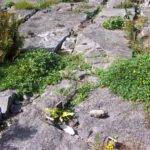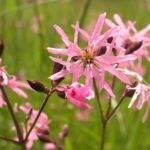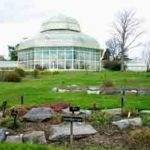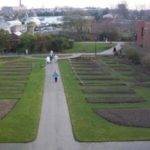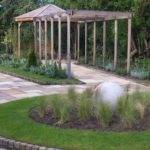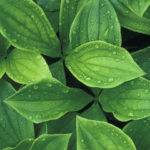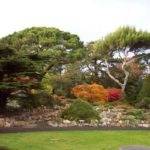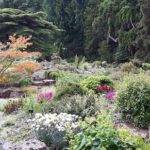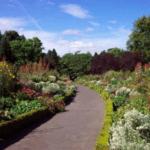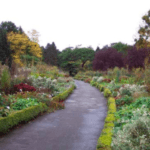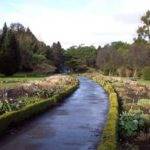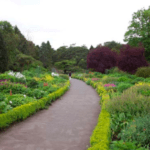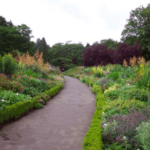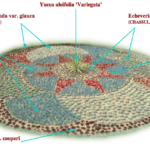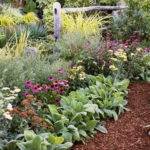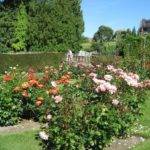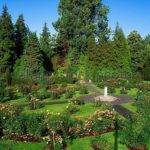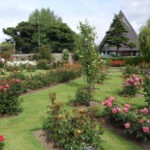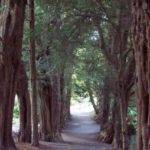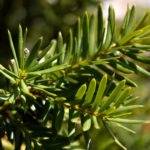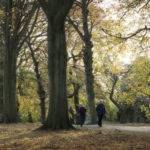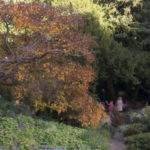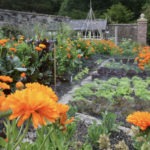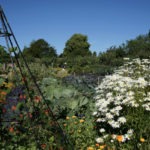Our fine plant collections hold over 15,000 plant species and cultivars from a variety of habitats from all around the world.
Within the living collections at the National Botanic Gardens we have over 300 endangered species from around the world, and six species already extinct in the wild. These are a vital resource, like a Noah’s Ark for the future. Cultivating a wide range of plants from the diverse climatic regions of the world, and displaying these under good horticultural practice allows our visitors to see what they too can achieve in their own gardens. We run training courses in gardening and hold practical workshops throughout the year. Click here and here for details.
The Gardens are open every day throughout the year except for Christmas Day, and are completely free to enter and explore. Interpretative guided tours are available Monday to Saturday for a small fee, and are free on Sundays. Click here for information on opening hours, and here for information about tours.
Scroll to end of this page for a map showing the location of each bed or garden.
Wild Ireland
The Irish flora is displayed in a number of ecologically-themed displays, showing woodland, heathland, and grassland. In addition, a number of more specialised habitat types are shown, such as the unique flora of limestone pavement.
The Burren in north County Clare contains some of the most extensive limestone karst scenery (limestone hills devoid of a soil covering) in Europe. Other, smaller areas of limestone pavement also occur in Mayo, Sligo, Leitrim, Cavan, Fermanagh, and Donegal. The slabs making up this display are composed of Carboniferous limestone, as is the Burren, but they have come from a commercial quarry in Stradbally, County Laois.
Among the extraordinary features of this area, botanically, is the combination of alpine plants (e.g. Dryas octopetala) growing side by side with Mediterranean species (e.g. Neotinea maculata). This is explained by the unique combination of cool, wet summers, which enables the alpines, which cannot tolerate summer drought, to survive, and the mild winters, which allow the frost-sensitive Mediterranean species to survive.
The Family Beds
The Order or Family Beds at the National Botanic Gardens, Glasnevin, demonstrate the relationships between plants. The collection represents some ninety of the more important families flowering plants which are hardy in Ireland. Horticultural hybrids and cultivars are not grown here.
Each flower bed contains members of a single or pair of closely related families; viewed in this manner it becomes possible to learn how each of these natural families is recognised. Formerly the beds were arranged in a sequence developed by Bentham and Hooker in 1854. Today we have reorganised the beds to reflect a modern understanding of the evolutionary relationships according to recent discoveries, especially at the molecular level. These findings indicate that there have been four main evolutionary radiations.
There are essentially five groups of plants displayed in the Order beds. You should begin your journey at the sundial end.
Our Plants
The Sensory Garden
Designed by Joan Rogers in 2002, the Sensory Garden was built by the voluntary effort of staff and students at the Botanic Gardens. It was supported by the local community along with funding from the Department of Justice, Equality and Law Reform as an initiative under the European Year of People with Disabilities, 2003. The garden was opened by An Taoiseach, Mr Bertie Ahern TD, on the 19th May 2003.
The Garden encourages people to experience its plants with touch, sound, taste, and smell, as well as by sight.
The Rockery
The rockery was developed at the end of the 1880s, and is constructed from stone quarried at nearby Finglas. Farrer described the Glasnevin rock garden as one of the finest examples of what he termed the “Devil’s Lapful”:
The plan is simplicity itself. Take a hundred or a thousand cartloads of bare square-faced boulders. You next drop them about absolutely anyhow: and you then plant things amongst them. The chaotic hideousness of the result is something to be remembered with shudders ever after.
– Farrer, My Rock Garden
The Herbaceous Border
Follow the seasons on the Herbaceous border by browsing the dated images below.
- September 2002
- October 2002
- January 2003
- May 2003
- July 2003
The Carpet Beds
Annual displays are located throughout the Gardens. In winter and spring bedding plants such as wallflowers, pansies and pelargoniums are displayed, and in summer these are replaced with annuals. Near the front gates are the celebrated carpet beds. In summer, tender succulent plants of contrasting shades and colours are arrayed in carpet-like beds.
The carpet beds are laid out each June and lifted in early October before the autumn frosts. Succulents of the crassulacean genera Echeveria and Crassula provide contrasting blue, green and red sectors. The two beds are not identical, but alternate the colour pattern of the other. The plants are overwintered in cold frames. For the display the plants are bedded into a couple of inches of sharp sand to prevent weeds germinating, and to provide rapid drainage.
The Rose Garden
- The Rose Garden. OPW
The Yew Walk/ Addison’s Walk
The Arboretum
The Fruit and Vegetable Garden
The vegetable garden demonstrates organic growing techniques, composting, and honey production. There is an extensive collection of Irish apple cultivars from across the country.
- Organic walled vegetable garden. OPW
- Walled vegetable garden. OPW

